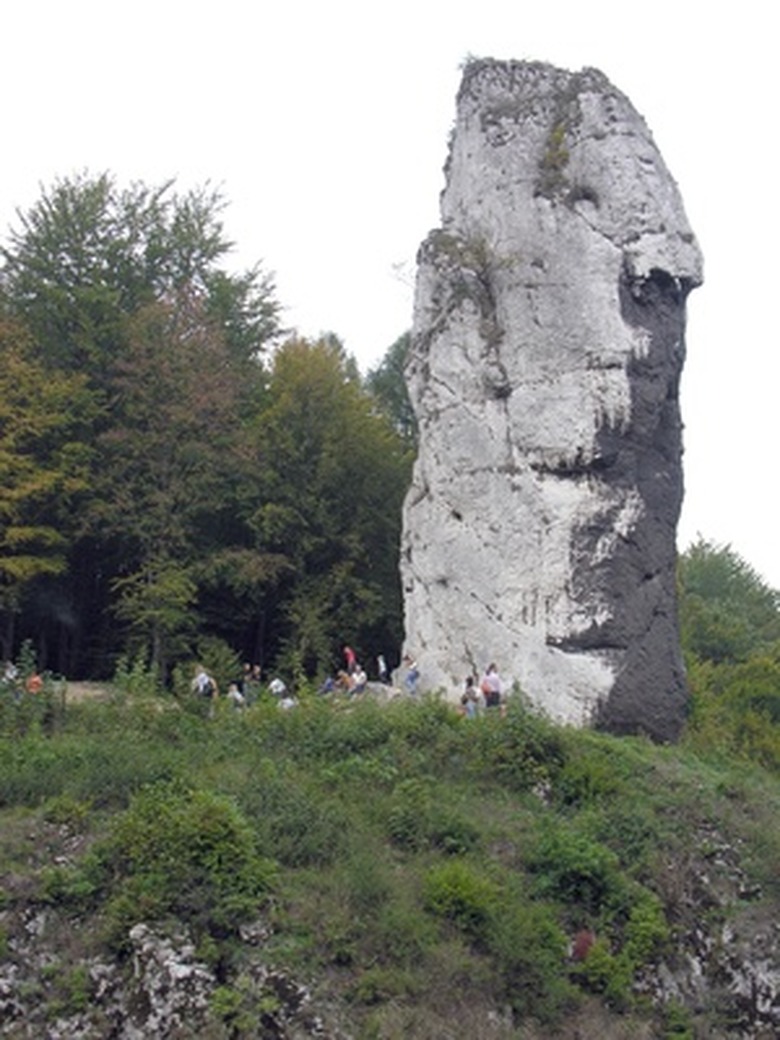How To Carve Limestone
Limestone is a soft rock that is relatively easy to carve and can have a wide variety of textures. Composed of the mineral calcite, it formed on the ocean floor from sediment and the bodies of early sea creatures. It's good for outdoor sculpture due to its ability to withstand acid rain. It is also one of the best stones for finding fossils and one of the main ingredients in cement.
Step 1
Wet the stone. Limestone has natural bed lines that make it easier to break apart and are more visible when wet. It will make it easier to carve if you follow the natural direction of the bed. Check for small cracks in the stone that could break off when carving.
Step 2
Draw your design on the stone.
Step 3
Hold your pitching tool about 1.5 inches from the edge of the stone. Tilt it slightly and so that it will break off the part of the stone that you want. Use your hammer to give a solid blow while holding the pitching tool in place. Remove as much stone as possible.
Step 4
Define shapes with the point chisel. Hold your thumb on the outside of the chisel to prevent hitting it with the hammer. Create ridges and grooves by carving parallel rows about one inch apart. Be careful not to use the point chisel too deep or at too steep an angle or it can cause a "stone bruise." Knock of the ridges of the first cuts and be sure to work on all areas of the sculpture to keep it even.
Step 5
Smooth the grooves and ridges you created with a tooth chisel. Be sure to hold it at about a 45 degree angle. If the angle is too high, the stone will bruise. If the angle is too low, it will skip the surface and not smooth the stone.
Step 6
Use a flat chisel to remove the texture from the tooth chisel. Use the curved edge for concave shapes.
Step 7
Finish the final smoothing of the stone with a rasp. Rasps are used on softer stones like limestone. You can polish the stone with by hand with sandpaper.
Things Needed
- Safety glasses
- Face mask
- Ear protection
- Shock-resistant gloves
- Hammer
- Pitching tool
- Point chisel
- Tooth chisel
- Flat chisel
- Rasp
TL;DR (Too Long; Didn't Read)
Sharp rock chips can fly off while carving, so always be sure to wear safety glasses. Further important protection is wearing a dust mask, ear plugs, gloves and always keep a first aid kit handy.
References
Cite This Article
MLA
Donohue, Cee. "How To Carve Limestone" sciencing.com, https://www.sciencing.com/carve-limestone-7613038/. 24 April 2017.
APA
Donohue, Cee. (2017, April 24). How To Carve Limestone. sciencing.com. Retrieved from https://www.sciencing.com/carve-limestone-7613038/
Chicago
Donohue, Cee. How To Carve Limestone last modified March 24, 2022. https://www.sciencing.com/carve-limestone-7613038/
